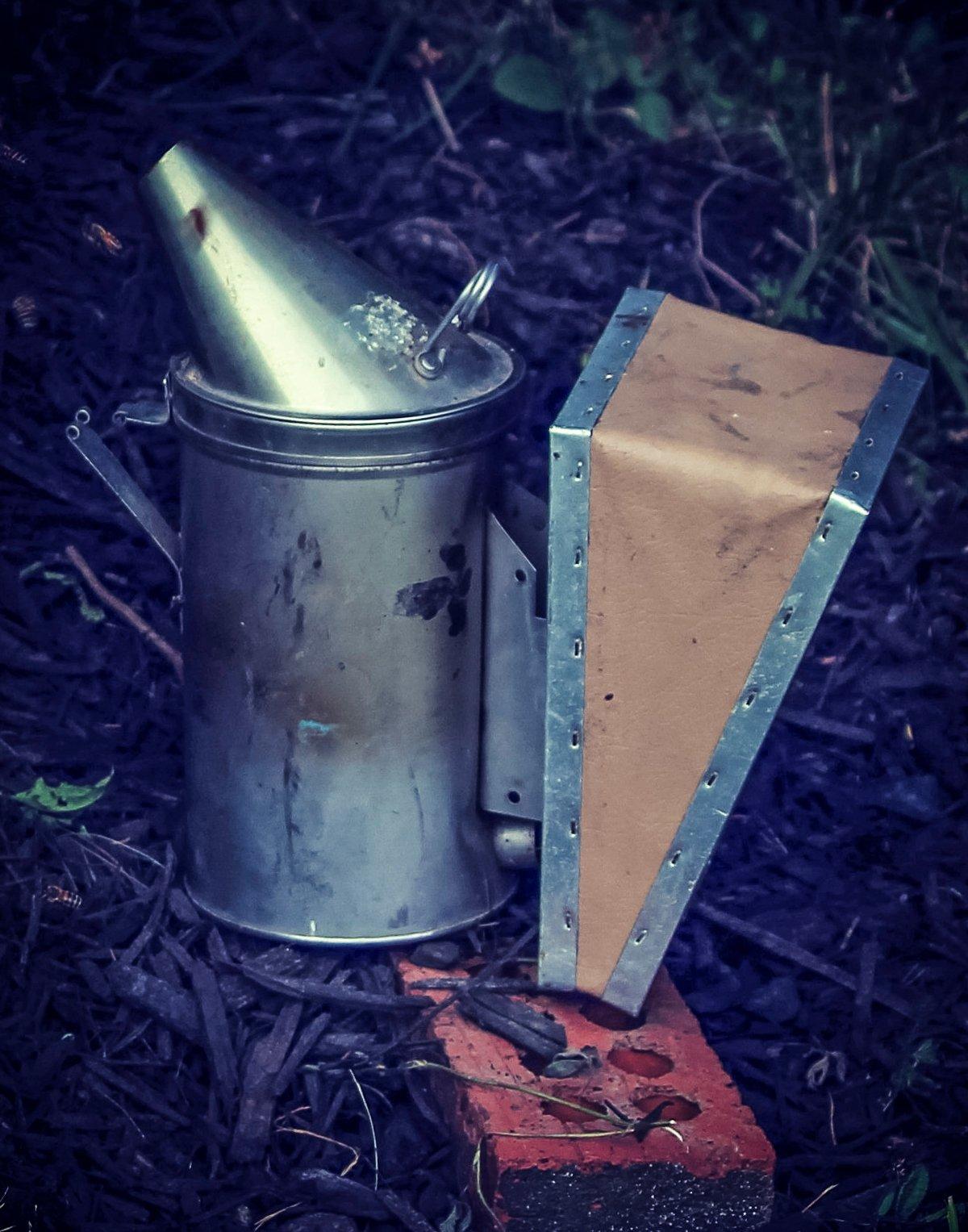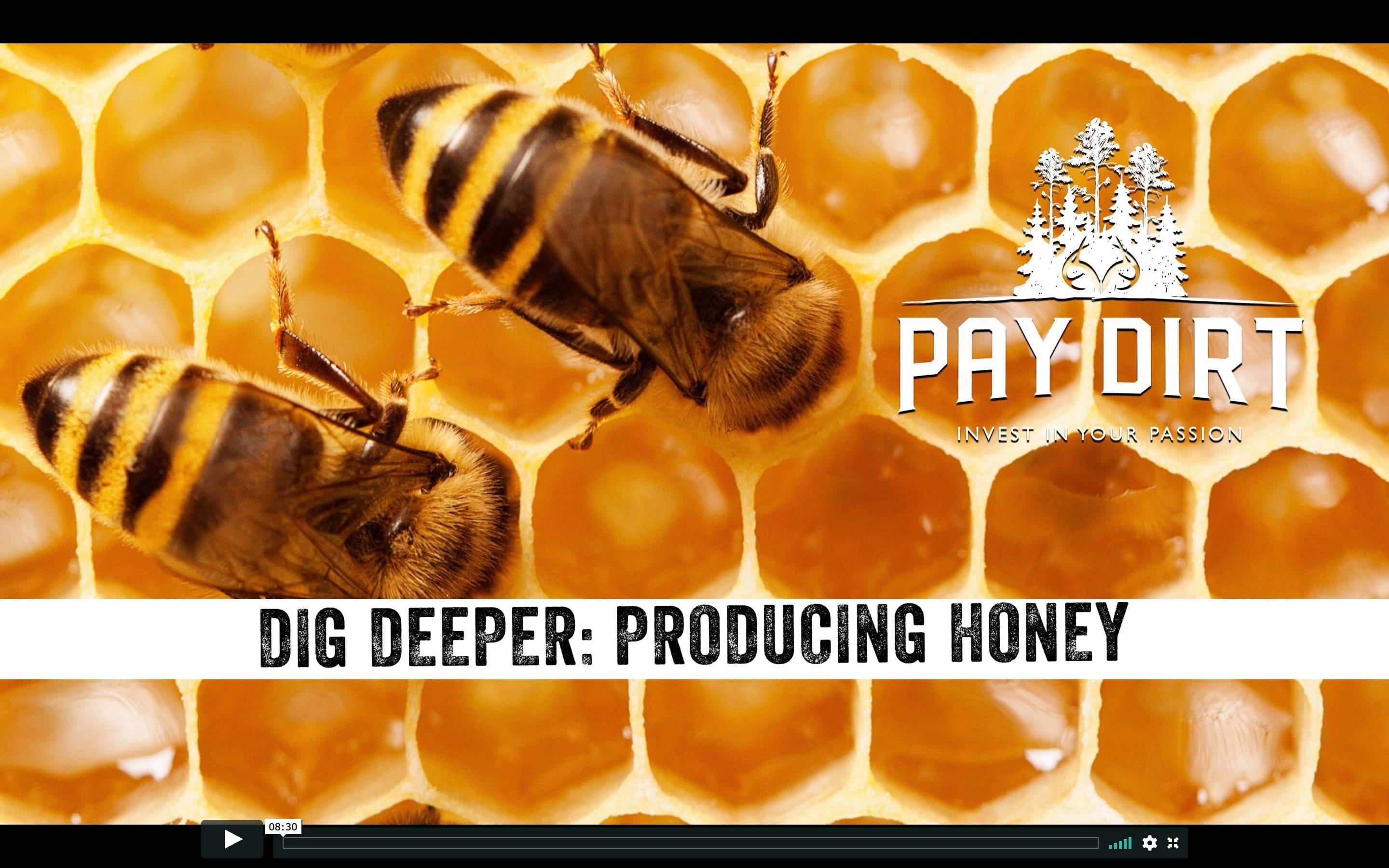Fresh honey is one benefit of beekeeping. Better food plots are another. Check out these tips from the Pay Dirt files on Realtree365
Honeybees are a great asset for wildlife managers. Installing beehives on your property will increase food plot production, improve production in native and cultivated fruit trees, and generally thicken cover across your property.
The Case for Pollinators
Honeybees play a critical role in our development of new plant varieties for food plots for deer, says Dr. Wayne Hanna, a researcher and plot-seed developer at Whitetail Institute. In fact, we couldn't do it without them. The importance of bees is vastly broader than just forage research, though. It would be impossible to overstate how critical bees are to life as we know it on Earth.
Without bees, we wouldn't have many of the food-plot blends hunters depend on today. A healthy bee population is also vital to many fruit and nut tree species, according to the USDA, which reports that active bee pollination is the only real way to increase your fruit yield. For example: A certain variety of apple tree may be covered in blossoms, but unless a bee stops at a neighboring apple before buzzing over, those blooms won't produce any apples. It's that simple; no cross-pollination, no fruit.
Depending on the location, raw local honey can sell for as much as $6 to $10 per pound.
So bees are important for deer habitat and food sources. But does the thought of owning several beehives - each packed with 50,000 stinging insects - worry you? Don't let it. As Realtree's Roger Culpepper learns from local beekeeper Skeeter Cotton in this episode of Pay Dirt, bees are more interested in making honey than they are in stinging you. Honeybees are easy to manage with minimal protective gear and a few tools. In fact, a lot of seasoned beekeepers don't even wear protective gear since most bees stay calm when you work slowly and deliberately.
As a bonus, healthy hives produce plenty of honey to eat or sell throughout the year. Depending on the location, raw local honey can sell for as much as $6 to $10 per pound. And a good hive can produce up to 60 pounds of honey per year. A few hives scattered around your property can make for a pretty good payday.
Gear Up
You don't need a ton of gear to get started. Most beekeeping supply companies offer starter kits that include everything you need except the bees. A man-made beehive is, at its essence, just a stack of boxes that contain frames of honeycomb. Starter kits usually include the components of the hive boxes, and the tools to access them.
Base: The bottom base holds all of the wooden boxes of the hive. The front of the base has an extended wedge where bees land and takeoff, with an entrance to the hive behind it. Think of it like a front porch.
Brood box: The first box that sits on the base is called a deep. This is where the queen bee will lay eggs and workers raise new worker bees. It's used for brood production, hence the name.
Second deep: An identical box of the same size sits on top of the brood box. This is called the second deep. When the bottom box fills, the queen will sometimes move into this box to lay more eggs. As late summer approaches, worker bees will fill empty brood cells with honey for the colony to live on throughout the winter. You should not harvest the honey in this box: It will be mixed with eggs and larva, and the bees need this honey to survive.
Honey supers: These shallow boxes are about half the height of the deeps they sit on top of. This is where bees store extra honey, and this is the honey that beekeepers harvest. Note: Some beekeepers put a special screen called an excluder between their second deep and the super. This keeps the larger queen from laying eggs in the honey you hope to harvest, while still allowing smaller worker bees through.
Frames: Think of these as vertical honeycomb trays that fit side by side inside the boxes. They give bees the correct space to build wax cells for laying eggs and storing honey. The frames are sized to fit into the appropriate box (i.e. deeps or supers). The beekeeper can lift each frame out one at a time to check for honey or brood.
Inner cover: The inner cover rests on the top box. Inner covers are usually vented to allow for air flow.
Outer cover: The outer cover tops the hive. These are normally constructed of wood with a metal cover or solid plastic. Outer covers are made slightly larger than the box dimensions so that they fit snugly over the top of the hive, securing it into place and protecting the bees from the elements. All of the boxes stack on top of each other, but do not permanently attach to each other (no assembly necessary) since beekeepers must take apart the stack of boxes to examine their bees and harvest honey.
Tools: Beekeepers need two primary tools. The first is a smoker, which is used to pump cool smoke over the bees to calm them while opening the hive box and while you work. You will also need a hive tool; a flat pry bar used to lift and separate the boxes and frames. Beyond those, you'll need protective clothing like a veil, sting-proof jacket and a pair of gloves. If you wear reading glasses, bring those to examine brood and honey.
Create an Apiary
The next step is deciding where to place your beehives. While bees will travel up to 2 miles or more to locate food, placing the boxes near pollen sources shortens their travel time and increases their efficiency. Pick a sunny location and face the entrances southeast into the warm morning sun and to avoid cold winter winds.
Buy Some Bees
One of the best sources of information for beginners is a network of experienced beekeepers in your area. Check with your local Ag or USDA office, library or County Extension Office to see if there's an active beekeeping group around, or if they can connect you with individual beeks in your area. Check online, too. Local groups are often active on social media.
These local beekeepers aren't just good at giving advice. They're also your best source for actually obtaining bees. Starter bees are usually sold in early to mid-spring, and they come in two forms.
If you buy a package, you'll get a cluster of bees made up of: one queen (the leader who's responsible for laying eggs), worker bees (an all-female workforce that collects pollen and nectar, raises the brood, and keeps the hive clean), and a few drones (male bees without stingers whose sole responsibility is to breed with the queen one time).
A nuc (short for nucleus colony) is slightly more expensive than package bees, but you get more for your money. This is a small hive in which the queen is already laying eggs and the workers have begun to bring in and store nectar and pollen. Nucs are a better option for new beekeepers because the hive is already established, and there is a lower risk of losing it.
The third option for obtaining bees is much less reliable, but it is free: capturing wild swarms of bees that appear in the spring. Existing hives naturally divide into two groups as the physical beehives get tight. The resulting swarms of bees collect in clusters near their old home and can be gently transferred to an empty hive box.
There's plenty of work that goes into keeping bees, and the start-up cost isn't insignificant. There's the risk of losing hives (and with them, your honey sales) along with some of your free time. The learning curve is steep. But if you do things right, you'll end up with plenty of honey. Plus, the reward for your deer property and the surrounding habitat is substantial.
In this segment of Pay Dirt, Cotton shows you how easy it is to extract and bottle your honey.
If you're interested in the benefits of bees on your property but you're not willing or able to invest your time and money into yet another hobby, you can still improve your hunting property. Many beekeepers are constantly searching for new locations to keep their bees, so check with local beekeeping clubs. Allowing someone to place hives on your property is a great way to learn about beekeeping while reaping pollinator benefits. For payment, beekeepers will often supply the landowner with a percentage of the honey produced on their land, making the arrangement beneficial for everyone.
Don't Miss: The Ultimate Deer Hunting Property
Check out more stories, videos and educational how-to's on land management.












